Introduction
Have you found deep learning difficult to learn? Are you confused about where to start? With the vast amount of resources available today, it can be quite overwhelming. Let me help you here. I was always a video lecture type of person, they seemed less boring and to the point. However, my opinion drastically changed once I discovered these books on deep learning by these elite publishers. For the longest time, I thought books were not a good option for studying complex mathematical and computer science concepts such as recurrent neural networks and deep learning. Especially for beginners or those delving into specialized areas like natural language processing. However, I am glad to be proven wrong by these books.
This article was published as a part of the Data Science Blogathon.
1. Deep Learning From Scratch: Building with Python from First Principles by Seth Weidman published by O’Reilly
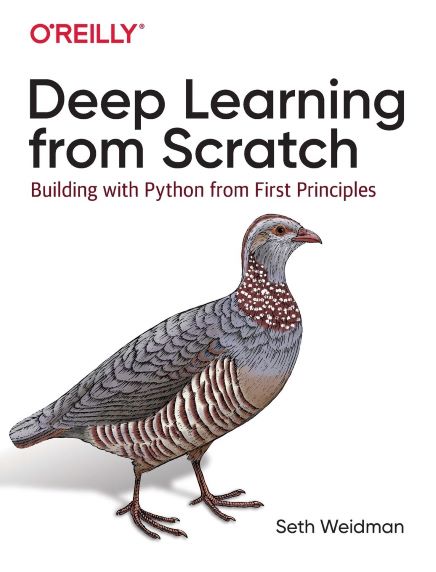
The book literally follows the concept mentioned in its name, which is Building from the First Principles. The author mentions in this book that the best way to learn any computer science concept is by explaining it.
The most crucial elements to explain it properly would be:
- An explanation of the algorithm in plain English so that the glossary becomes less of a confusing factor,
- Visual representation of the working of that algorithm to let the reader easily image the concept with more understanding,
- A mathematical explanation of “why the algorithms work”, and
- Pseudocode implementation of the algorithm.
This book gives its best in fulfilling all the above-mentioned roles for anyone with little background in deep learning. This not-so-thick book is pretty amazing.
2. Deep learning in Python/ Pytorch by Manning Publications
These books in particular are so popular and amazing that Pytorch recommends the PyTorch version of this book on their official site’s reading references. They even made the “Deep Learning with Pytorch” available to everyone for free.
They definitely are the most preferred books to start Deep learning and some hands-on as well. Let’s see what all the cover in their content:
Deep Learning with Python
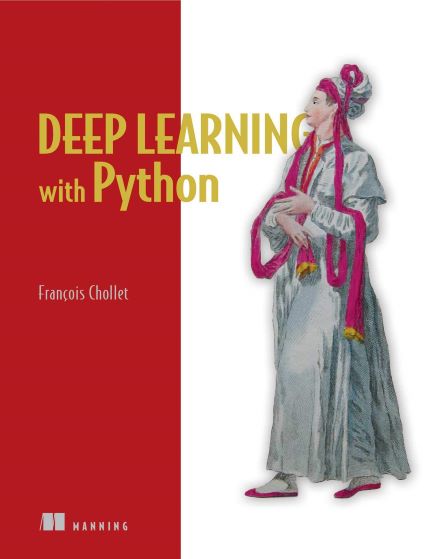
The book is divided into 2 parts:
- First (Fundamentals of Deep Learning) where you will learn about the high-level and most crucial concepts of deep learning.
- Second (Deep Learning in Practice) where the book covers deep learning for computer vision, text and sequences, advanced deep-learning practice, and generative deep learning.
Deep Learning with PyTorch
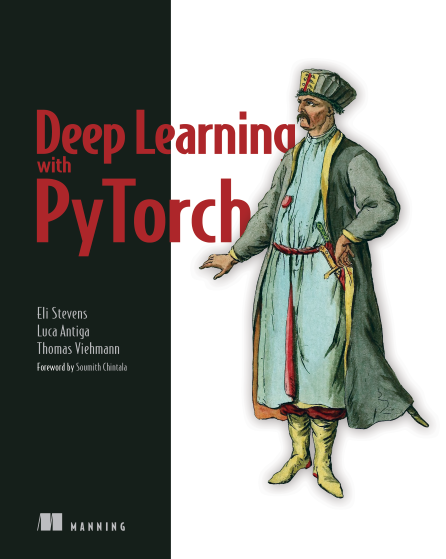
I have already told you how popular this book is, let’s look at its content. The book is divided into 3 parts:
Part 1 (Core PyTorch): Here you will learn about the introduction to deep learning and PyTorch as a library, pre-trained models, tensors and their applications, and more.
Part 2 (Learning from Images in the Real-world): This part covers a real-life example of the early detection of lung cancer and its complete development in detail. This, in my opinion, adds so much perspective for a learner.
Part 3 (Deployment): The third part talks about the last step of any ML application development for the first time, which is letting others use your model and make your model live in the real world.
3. Grokking Deep Learning by Andrew W. Trask published by Manning Publications
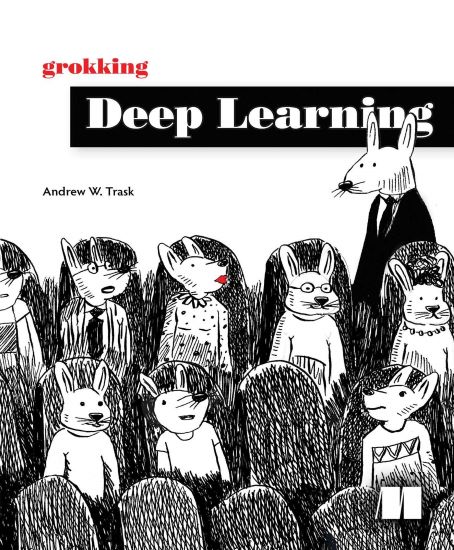
If you ask me “Where do you think I should start?” I would close my eyes and point you towards this book. A fantastic book on deep learning which even makes me wonder why didn’t I start with this.
This book covers most of the topics that you would need to get your hands dirty with deep learning. It takes you on a positive exponential slope toward knowledge and intuition.
This is a brief of what you will learn: {Intro to deep learning and why you should do it, fundamental concepts, intro to neural networks, gradient descent in detail, visualizing neural networks, backpropagation and learning concept, batching and regularization, recurrent networks for text data, LSTMs and at last federated learning}. Trust me if this is not enough to start then most of the things are not.
4. Hands-on Machine Learning with Scikit-learn Keras and TensorFlow by Aurelion Geron published by O` Reilley
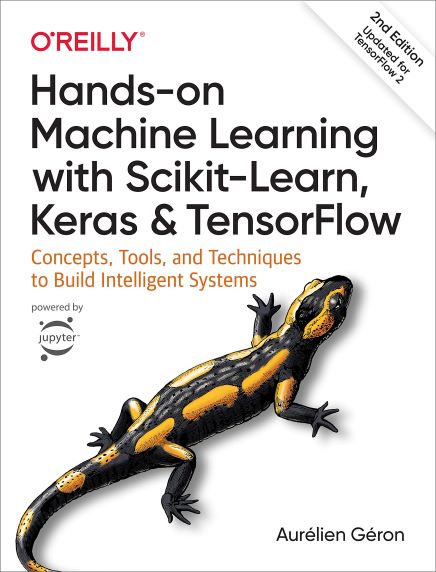
After you are done with Basic statistics, Machine learning, and Deep learning. Now you wanna up your game with practical implementations and make a full-fledged Deep learning model in TensorFlow. This is the book that not only me but TensorFlow itself suggests.
Personally, I am following this book constantly, and in terms of deep learning with TensorFlow, this is my best book. The way the author has explained the concepts is exceptionally easy and intuitive. It made me feel more powerful every time I was done with a certain section.
The book is a treasure of knowledge with more than 800+ pages on various topics. This includes:{Fundamentals, end-to-end ML projects, detailed most common machine learning algorithms and techniques, neural networks with Keras, custom models and training with Tensorflow, deep computer vision with convolutions, sequence models with RNNs and LSTMs, attention models, generative learning like autoencoders and GANs, reinforcement learning}.
Learning and working parallelly with this book will completely change your skill level in machine learning & deep learning in practice. You should definitely try it.
5. Deep Learning by Ian Goodfellow, Yoshua Bengio, and Aaron Courville published by MIT Press

Starting your journey into deep learning can feel like a big step. You might wonder where to begin or which book can help you understand this complex subject. “Deep Learning” by Ian Goodfellow, Yoshua Bengio, and Aaron Courville is the perfect starting point. This book is like a treasure map, guiding you through the world of deep learning with clear directions and insights. This book does a great job of mixing simple explanations with real-world examples. It starts with the very basics and gently takes you to more advanced ideas. You won’t just learn how things work; you’ll understand why they work, which is great for really getting the hang of deep learning.
6. Deep Learning for Coders with fastai and PyTorch by Jeremy Howard & Sylvain Gugger published by O’Reilly
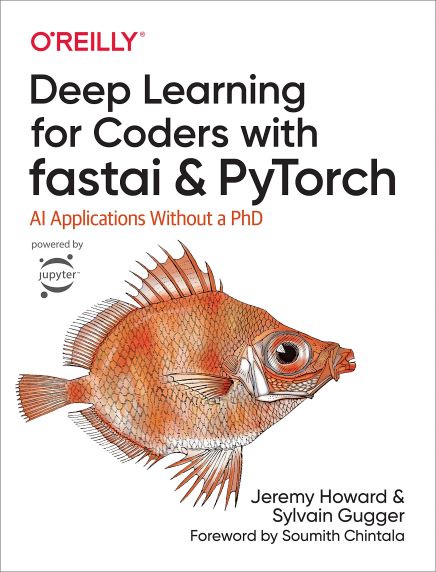
Saving the best full-package resource for the end. This book is definitely among my top 3 favorite books, absolutely beautiful not just in terms of deep learning but all other very important factors that are related to deep learning in practice like a model to production, data ethics, and your deep learning journey (a map to follow). These three things are really important if you are hoping to become a deep learning engineer or something even remotely similar to it in practice.
Backed by the whole website fast.ai to teach people deep learning from scratch for free with complete video tutorials, Labs on paper space’s deep learning environment, and introduction to a very powerful library for deep learning in PyTorch i.e. fastai. The book is enough detailed with so many practical guides that you are definitely gonna learn something new after every single read.
Let me give you a glimpse of what you will see inside this book {fastai’s applications which include image classification, training state-of-the-art models, collaborative filtering deep dive, tabular modeling, NLP deep dive, then further there comes language model from scratch, CNNs architecture like ResNets and all other very essential deep learning architectures from scratch} I extremely recommend this to people interested in deep learning.
7. Python Deep Learning by Ivan Vasilev and Daniel Slater

If you’re dipping your toes into the deep learning pool and you’re comfortable with Python, then “Python Deep Learning” by Ivan Vasilev and Daniel Slater could be your next read. Think of this book as your friendly guide into the world of deep learning, tailored specifically for those who prefer learning through doing. The best part about “Python Deep Learning” is that it’s all about learning by doing. You’ll get to work on real projects and see your code come to life. It’s not just theory; you’ll actually get to build things, which makes learning so much more fun and effective.
“Python Deep Learning” is a great next step for anyone who’s already a bit familiar with Python and wants to explore deep learning. It’s practical, straightforward, and covers a lot of ground without making things complicated. By working through real projects and using tools that professionals use, you’ll feel more confident in your ability to tackle deep learning challenges. It’s like having a practical workshop in a book, making it an ideal companion for beginners eager to apply their Python skills to the exciting world of deep learning.
8. Neural Networks and Deep Learning: A Textbook” by Charu C. Aggarwal

Charu C. Aggarwal has a knack for breaking down sophisticated concepts into understandable chunks. This book is crafted for those who are new to the field, whether you’re a student starting your journey in data science or a professional looking to pivot to a tech-focused role. It’s like having a knowledgeable professor by your side. “Neural Networks and Deep Learning: A Textbook” is like a comprehensive course packed into a book. .
It takes you by the hand, leading you from the basics all the way to advanced topics, all while keeping things understandable. With a good mix of theory and practice, it prepares you not just to learn, but to apply what you’ve learned. Whether you’re studying for your degree or looking to update your skills for a new job, this book is a valuable resource that will help you make sense of complex concepts in a clear and approachable way.
9. Deep Learning for Computer Vision” by Rajalingappaa Shanmugamani

“Deep Learning for Computer Vision” is a guide that takes you on a journey through the eyes of machines. It’s perfect for anyone who wants to explore how deep learning enables computers to process and understand visual information. With a mix of theory and hands-on projects, Rajalingappaa Shanmugamani makes complex ideas approachable and engaging. By the end of this book, you won’t just understand the basics of computer vision; you’ll be able to apply what you’ve learned to real-world problems. It’s an essential read for anyone ready to dive into the fascinating intersection of deep learning and the visual world.
10. Natural Language Processing in Action” by Lane, Howard, and Hapke

“Natural Language Processing in Action” is an ideal guide for anyone eager to explore how computers can be programmed to understand and manipulate human language. The book is friendly, filled with practical exercises, and covers some of the most exciting advances in NLP. By the end of it, you’ll not only understand the basics of natural language processing but also have hands-on experience with projects that apply these concepts in real-life scenarios. Whether you’re a student, a software developer, or just someone fascinated by the intersection of language and technology, this book will equip you with the knowledge and skills to dive deeper into the world of NLP.
11. Deep Reinforcement Learning Hands-On” by Maxim Lapan

“Deep Reinforcement Learning Hands-On” is like a survival guide for the wilderness of reinforcement learning. Maxim Lapan’s clear explanations and practical approach make it easy for anyone to understand and apply the principles of reinforcement learning. By the end of the book, you’ll not only have a deep understanding of reinforcement learning concepts but also the skills and confidence to tackle real-world problems using reinforcement learning techniques. Whether you’re an aspiring AI researcher or a curious explorer, this book is an essential companion for your journey into the fascinating world of reinforcement learning.
12. Generative Deep Learning: Teaching Machines to Paint, Write, Compose, and Play” by David Foster

“Generative Deep Learning” is like a window into a world where machines are artists, musicians, and writers. David Foster’s engaging writing style and captivating examples make complex concepts easy to understand, even for those new to the field. By the end of the book, you’ll not only have a deeper appreciation for the creative potential of AI but also the inspiration and practical knowledge to start experimenting with generative deep learning in your own projects. Whether you’re a seasoned creative or just curious about the future of AI, this book is a must-read for anyone interested in the intersection of technology and creativity.
13. AI: A Guide for Thinking Humans” by Melanie Mitchell

“AI: A Guide for Thinking Humans” is like a roadmap for navigating the complex landscape of artificial intelligence. Melanie Mitchell’s clear and engaging writing style, combined with relatable examples and balanced perspectives, makes this book accessible to readers of all backgrounds. Whether you’re new to AI or already familiar with the technology, this book offers valuable insights and perspectives that will help you navigate the increasingly AI-driven world with clarity and confidence.
Conclusion
In conclusion, diving into the world of deep learning can be both exhilarating and daunting, but armed with the right resources, it becomes an exciting journey of discovery. The curated list of top 10 deep learning books for beginners presented here serves as a gateway to understanding this cutting-edge field. From foundational texts like “Deep Learning” by Goodfellow, Bengio, and Courville to practical guides like “Hands-On Machine Learning with Scikit-Learn, Keras, and TensorFlow” by Aurélien Géron, each book offers a unique perspective and approach to learning.
Whether you’re interested in computer vision, natural language processing, or reinforcement learning, there’s a book tailored to your interests and skill level. These books not only provide clear explanations of complex concepts but also offer hands-on exercises and real-world examples to reinforce learning.
So, whether you’re a student embarking on a journey into AI, a professional looking to expand your skill set, or simply a curious mind eager to explore the frontiers of technology, these top 10 deep learning books are your trusted companions, guiding you through the exciting world of deep learning and artificial intelligence. With dedication, curiosity, and a willingness to learn, the mysteries of deep learning are within reach – the future of AI awaits!
Frequently Asked Questions
A. Yes, many of the recommended books provide code examples, often available on GitHub. These resources are invaluable for in-depth hands-on learning and understanding the application of deep learning concepts.
A. Essential skills include a solid foundation in mathematics (particularly calculus and linear algebra), programming proficiency (Python is most common, with libraries like NumPy), and an understanding of machine learning(regression, classification) and deep learning frameworks like TensorFlow or PyTorch.
A. Datasets can be found on various platforms like Kaggle, UCI Machine Learning Repository, and directly through APIs provided by companies and research institutions. They are critical for training and testing models.
A. Yes, many machine learning books now include sections on deep learning and reinforcement learning, providing a comprehensive overview of both fields. These books often start with basic machine-learning concepts before diving into deep-learning techniques.
A. Practical experience is crucial. Working with real datasets, experimenting with different deep learning models, and implementing projects using deep learning frameworks offer invaluable in-depth insights and a deeper understanding of deep learning in action.
The media shown in this article are not owned by Analytics Vidhya and is used at the Author’s discretion.





Thank you so much for this kind and good service.your services is better than better.